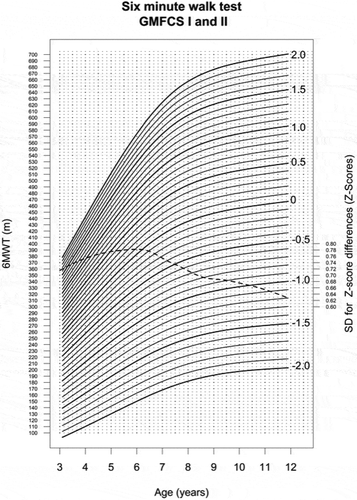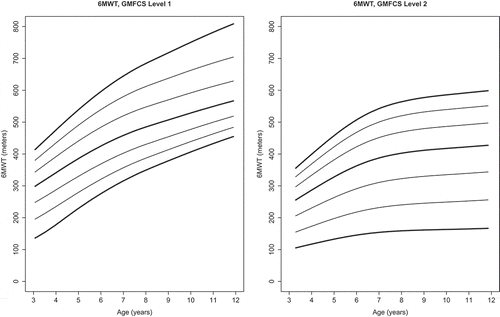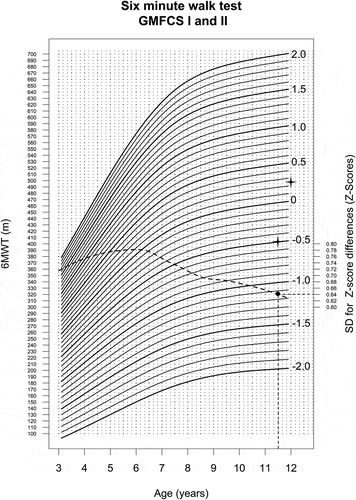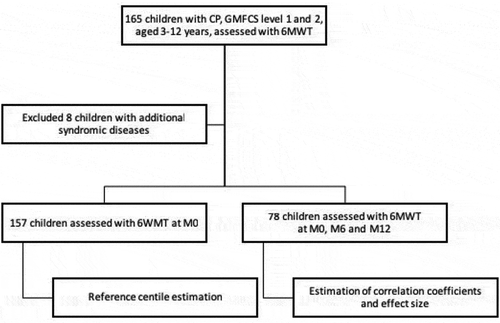Figures & data
Table 1. Characteristics of the study population and evaluation of the effect of the rehabilitation program on the walking capacity assessed by the 6MWT
Table 2. Tabulated 6MWT reference for use with children having cerebral palsy (GMFCS 1 and 2). Distance in meters, age in years. C: centile, L: skewness, M: mean, S: coefficient of variation
Table 3. Tabulated values of the standard deviation of 6MWT Z-score differences (6 months apart), age in years
Figure 2. Reference curves for 6MWT in children with CP GMFCS levels 1 and 2. The centiles are labeled with the corresponding Z‐scores. The dashed line represents the standard deviation of the difference of 2 GMFM‐66 Z‐scores measured 6 months apart

Figure 3. Reference curves for 6MWT: a. in children with CP GMFCS level 1 and b. in children with CP GMFCS level 2. Centiles presented 5th, 10th, 25th, 50th, 75th, 90th and 95th

Figure 4. Case study. The figure illustrates the use of the tool. First, the two 6MWT scores are entered (two crosses, age1 = 11 years 6 months, age2 = 12 years 0 months). The corresponding Z-scores are Z1 = −0.5 for M0, Z2 = 0.25 for M6. The age-dependent standard deviation (SD) of the centile change is determined by using the dashed curve (or more precisely) and the age of the child at the first 6MWT assessment at M0 (SD = 0.64). Using the formula (Z2-Z1)/SD, the Z-score for the centile change can be calculated. It corresponds to a large individual effect size 0.75/0.64 = 1.17


